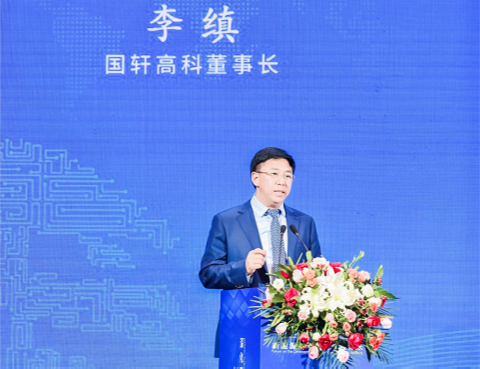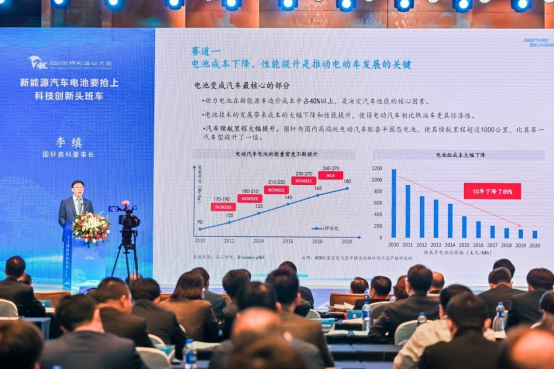Gotion High-Tech Chairman Li Zhen: New Energy Vehicle Batteries Must Lead Technological Innovation

Against the backdrop of the "carbon peaking and carbon neutrality" strategy, the new energy vehicle industry has ushered in a new stage of high-quality development that has brought China's power batteries to confront new opportunities and challenges. The World Manufacturing Convention Forum on the Development of New Energy Vehicle Industry took place in Hefei on the morning of November 20. Chairman of Gotion High-Tech Li Zhen delivered a keynote speech at the forum. In his speech, he spoke about a need for new energy vehicles to find their own "track" to shorten the distance between them and traditional cars, with power batteries leading the technological innovation in their development.
Gotion High-Tech was one of the first enterprises to engage in the independent research and development, production, and sale of lithium-ion batteries for new energy vehicles in China and is a pioneer in the new energy industry in Anhui Province.
Li identified the following five areas of research and exploration as key if Anhui wished to build the global new energy vehicle sector’s most important industrial base and to lead the industrial development of new energy vehicles in the future:
Decreases to battery costs and improvements to performance will be key to the development of electric vehicles. Li pointed to batteries as the heart of electric vehicles, calling for continuous improvement to battery technology, the solution of material supply issues, reduction of carbon emission and energy consumption, and adherence to the strategy of carbon peaking and carbon neutrality. Gotion High-Tech improves battery performance and reduces energy consumption in the production process through technology development. The company also plans to develop new energy power generation in Wuhai, Inner Mongolia and build a zero-carbon emission base for new energy vehicle materials.

Li Zhen is delivering the keynote speech at the Forum on the Development of New Energy Vehicle Industry
Electrification continues to make vehicle manufacturing more accessible, with materials science fueling the automotive revolution. Li predicted that materials science would be the focus of new energy vehicles in the future, with die-casting technology replacing machining technology, carbon and silicon fibers being extensively applied to the field of automotive hardware, and the proportion of hardware in automotive costs continuing to decrease. He also said that nearly 1,000 of Gotion High-Tech's 2,300 R&D staff were engaged in materials science research and that there would be no advances in battery science without advances in materials science.
Software will become the focus of automotive technology. The average percentage of electronic and software systems in automotive costs increased from 19.1% in 2000 to 35% in 2020. In particular, with the further development of intelligent, chip technologies and driverless technology, intelligent vehicles will become the main means of transportation. Li believed that software science and the training of information technology professionals were crucial to Anhui's construction of a new energy vehicle industry base.
Automated driving will drastically change society as a whole. Li said that society has paid a great price – human, temporal, and monetary – to be able to drive. China has about 410 million driving license holders. Assuming that the average person spends 50 hours driving per year, society as a whole wastes RMB 860 billion in output, as measured by the latest per capita wage in China. Autonomous driving will seek to dissolve these huge outputs in the future, change people's lifestyles, and create new industrial spaces for society.
The automotive ecosystem is changing dramatically. Li thought that three levels of change were taking place. First, energy was shifting from oil to electricity, and the industrial system had been disrupted, from oil extraction, refining, oil transport, and oil sales to electricity generation, power transmission, and electricity sales. Second, the heart of service was changing from repair and maintenance to battery recovery. Parts manufacturing was becoming less and less prominent, and maintenance costs were decreasing. Third, the ecology of people serving vehicles had been completely overturned.
At the end of the speech, Li shared his understanding of science and technology innovation in three main points: there were no cutting corners in science and technology innovation – technology had to be applied to have a future; the first mover in science and technology innovation reaps the greatest gain; imagination is essential for science and technology innovation to go from nothing to something.

